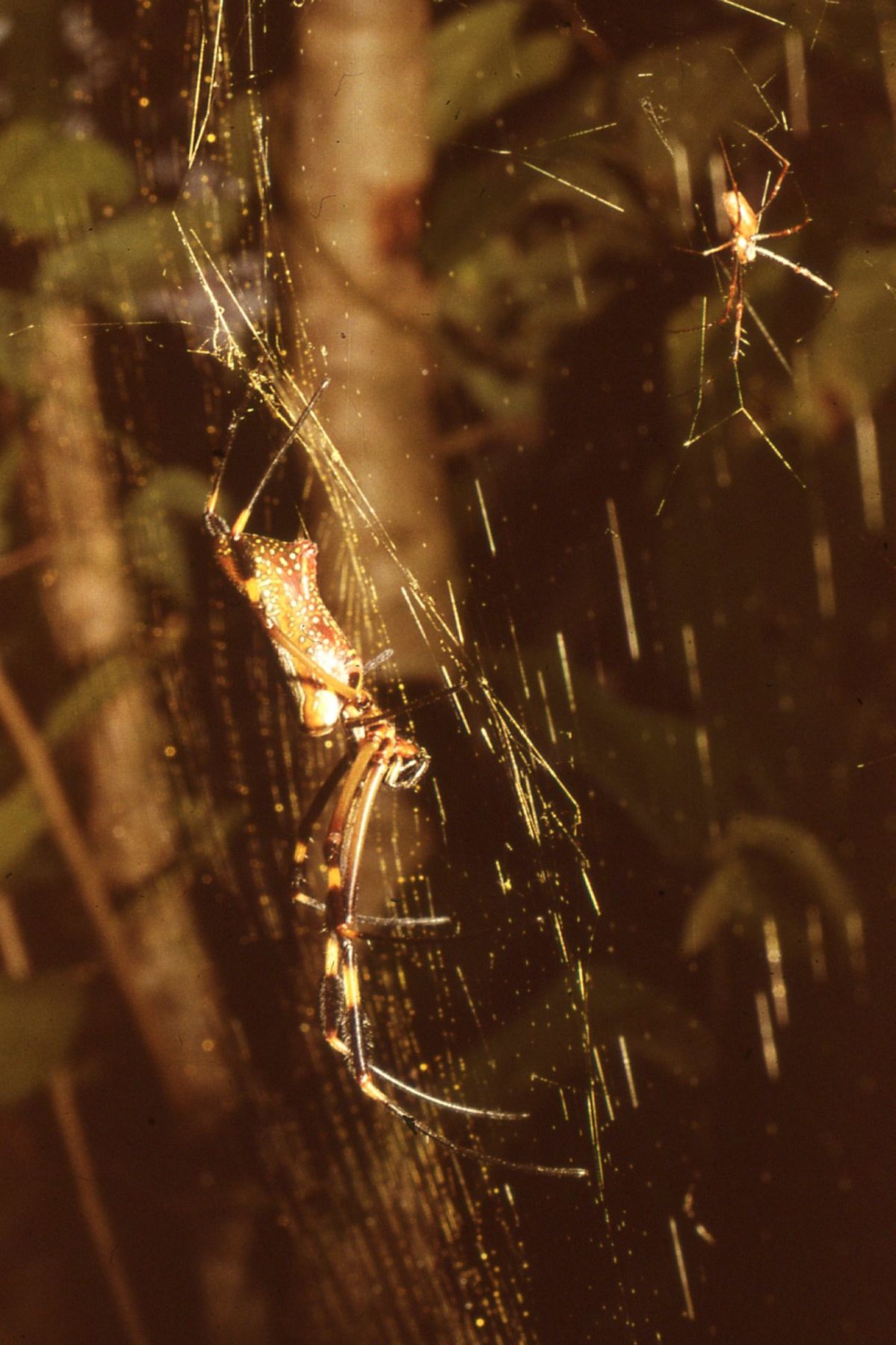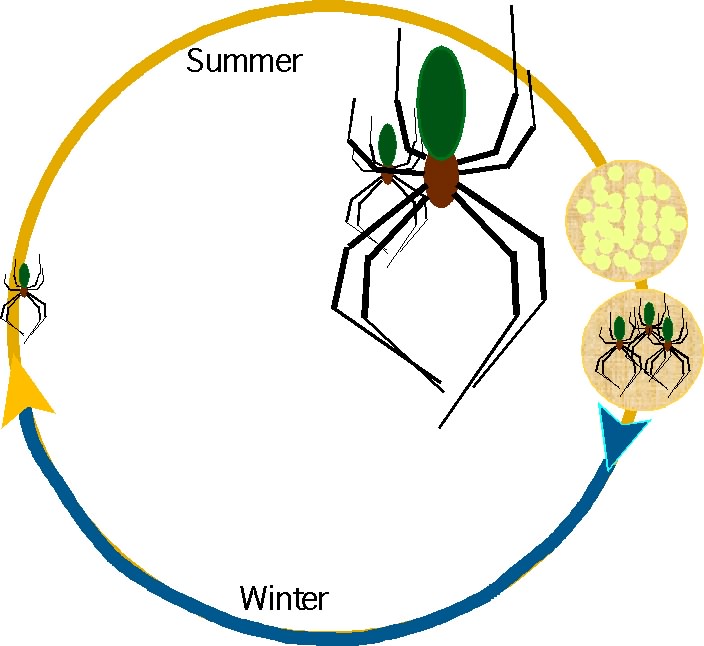 |
Spring:
Spiderlings
emerge
from
the
egg
sac when conditions improve - either rains start
(in seasonally dry sites) or the weather gets warmer (in
seasonally
cold sites).
They live together,
without feeding (or feeding on debris in the web) for
about a week
before dispersing.
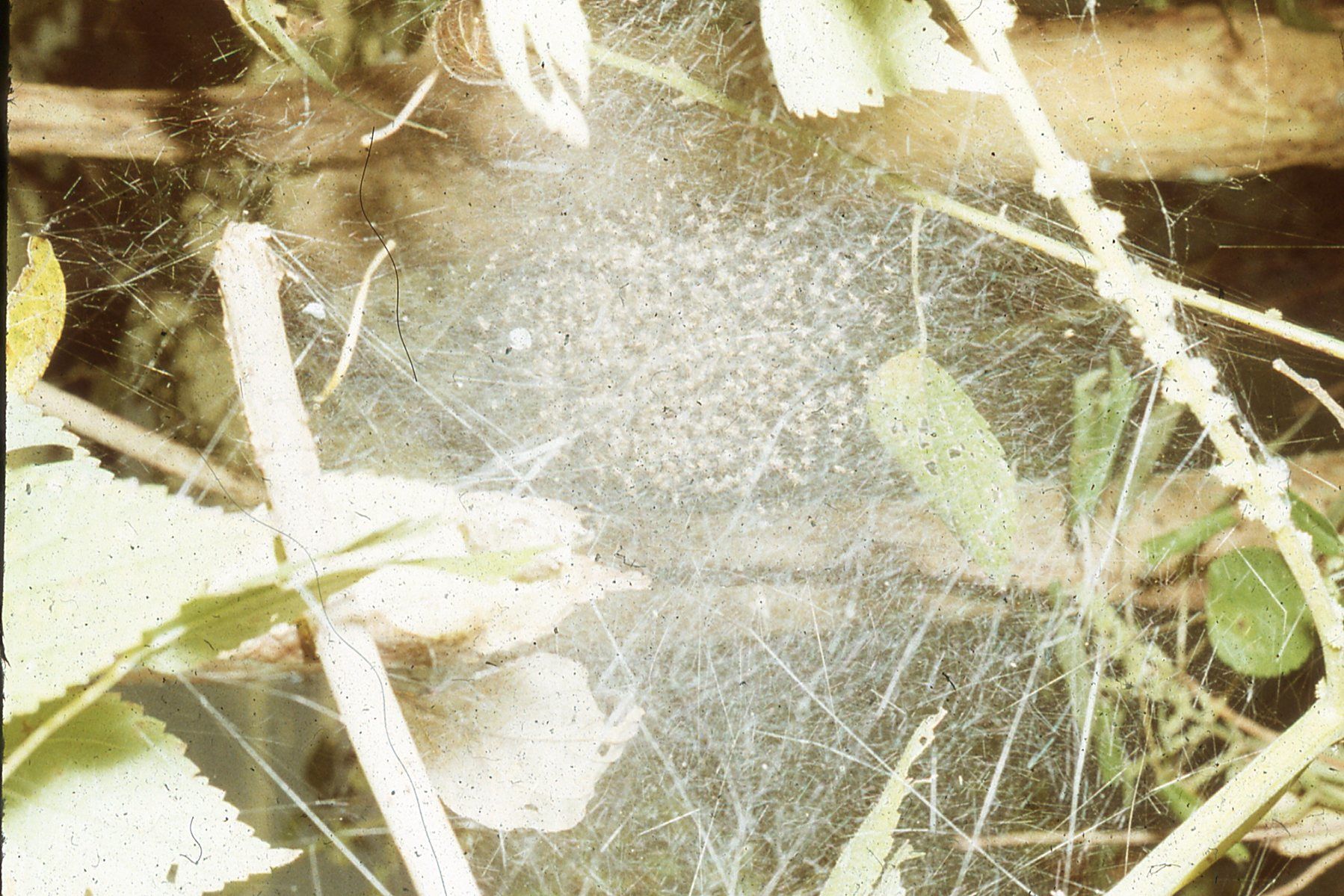
|
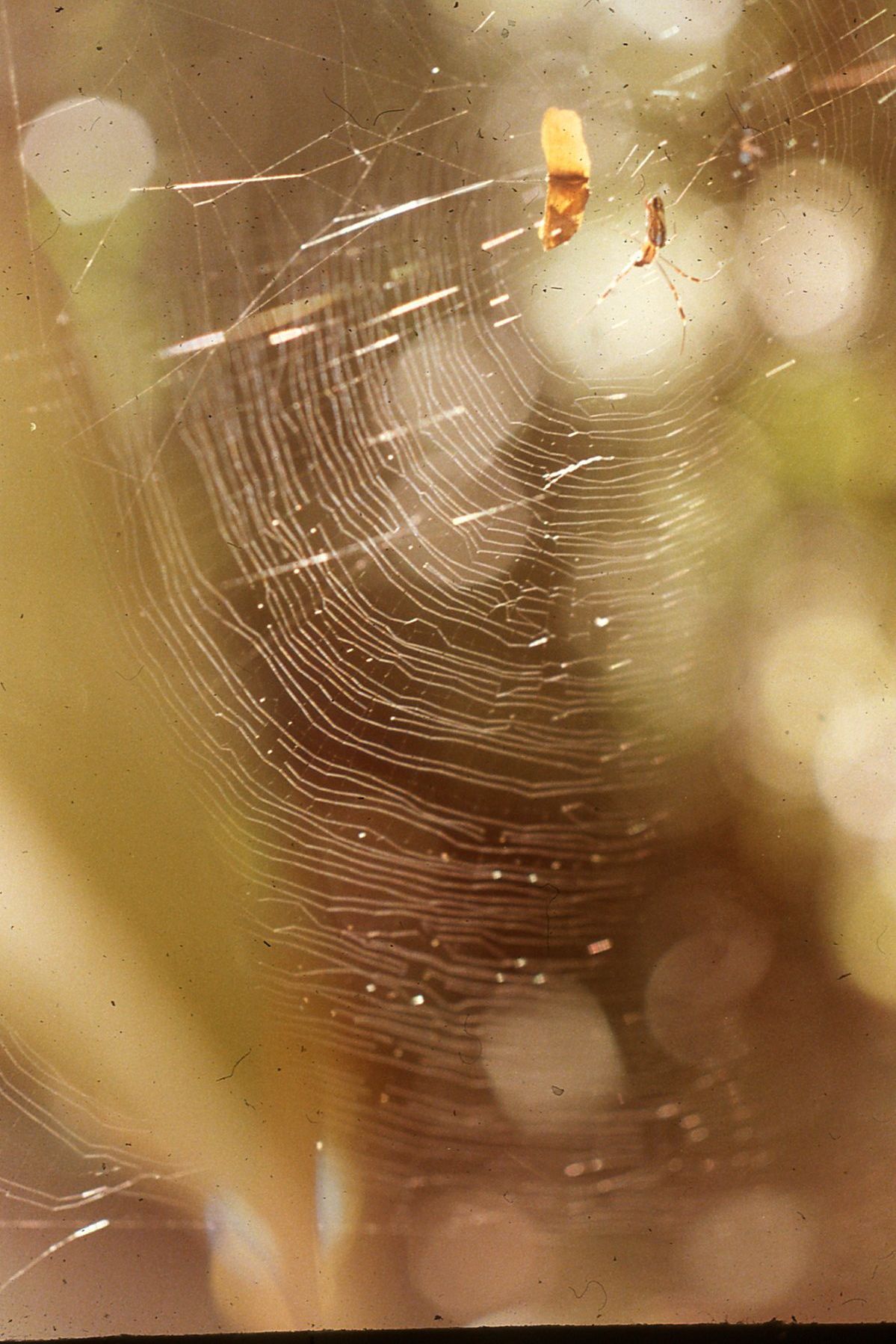 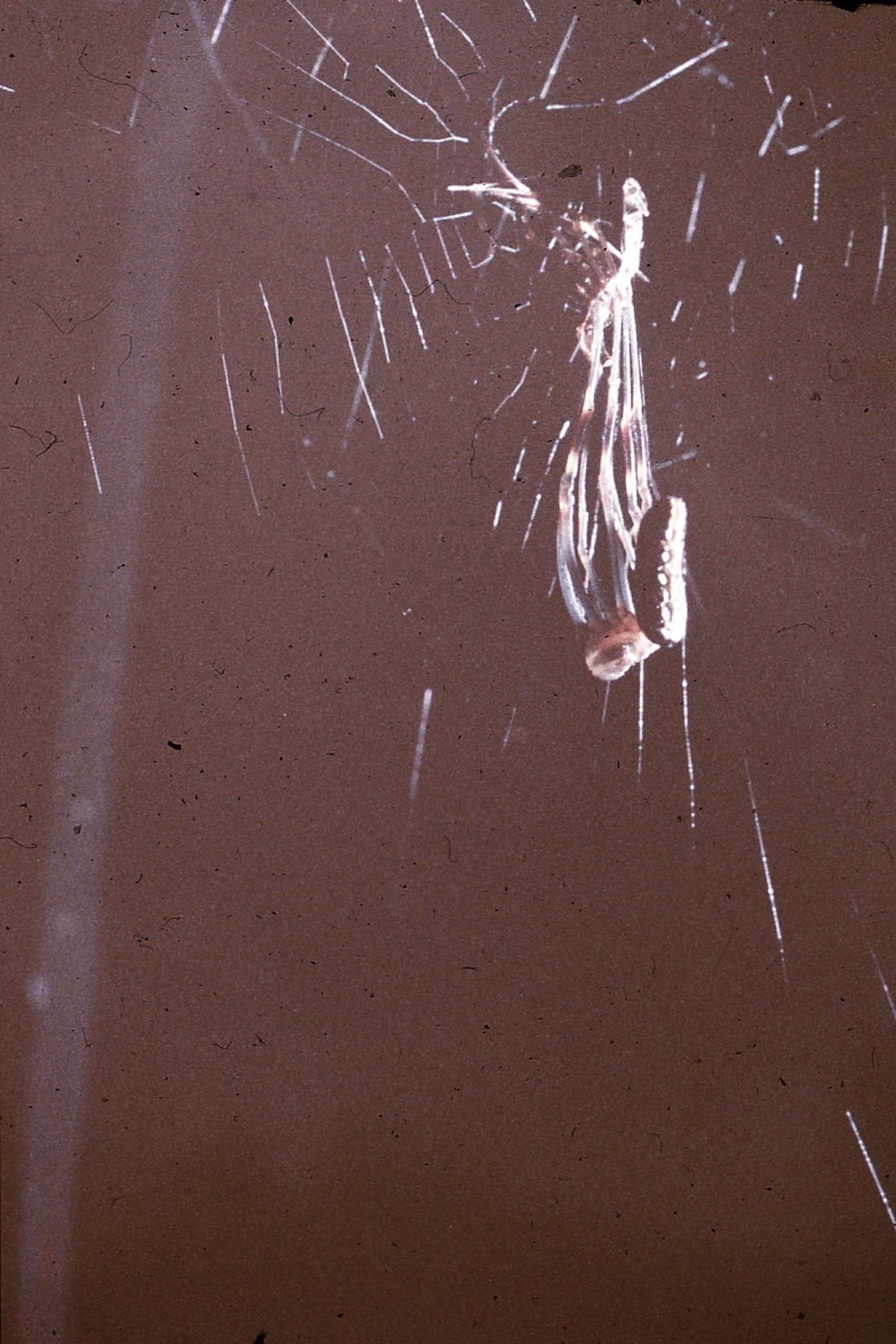
Summer:
In
the
summer,
spiders live on individual webs, capturing prey and
growing by molting
- shedding their "skin" - actually their external
skeleton.
 Learn
more about growing by molting Learn
more about growing by molting
|
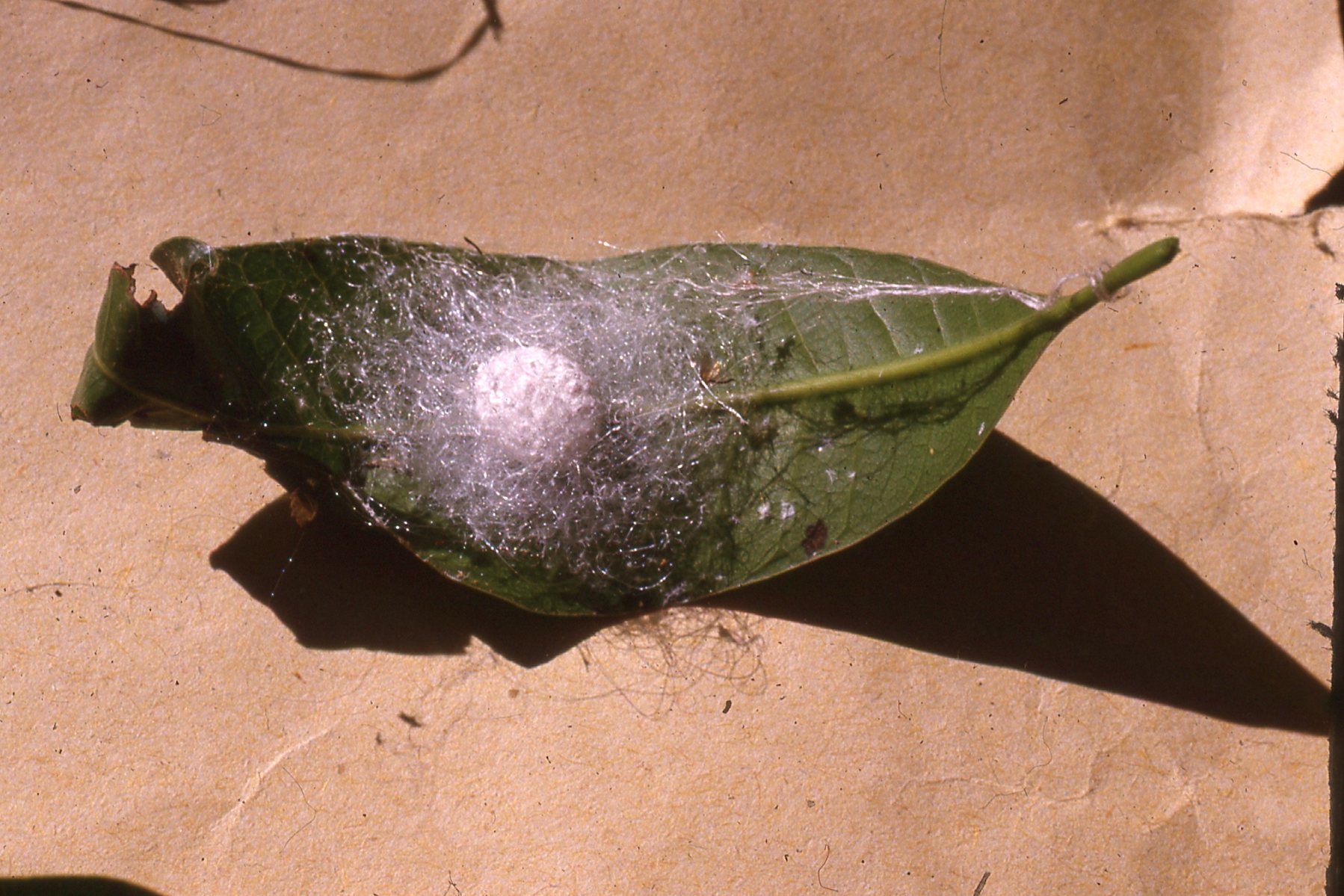
Fall:
The
females
lay
egg sacs attached to leaves - usually under them - and
tie the leaf to
the twig so that it won't fall to the ground.
The spiderlings
hatch
but stay inside the egg sac for the winter.
Winter:
The
spiderlings
stay within the silken egg sac, waiting for better
conditions. Early-emerging spiderlings risk
dying if the weather
turns
bad again.
|
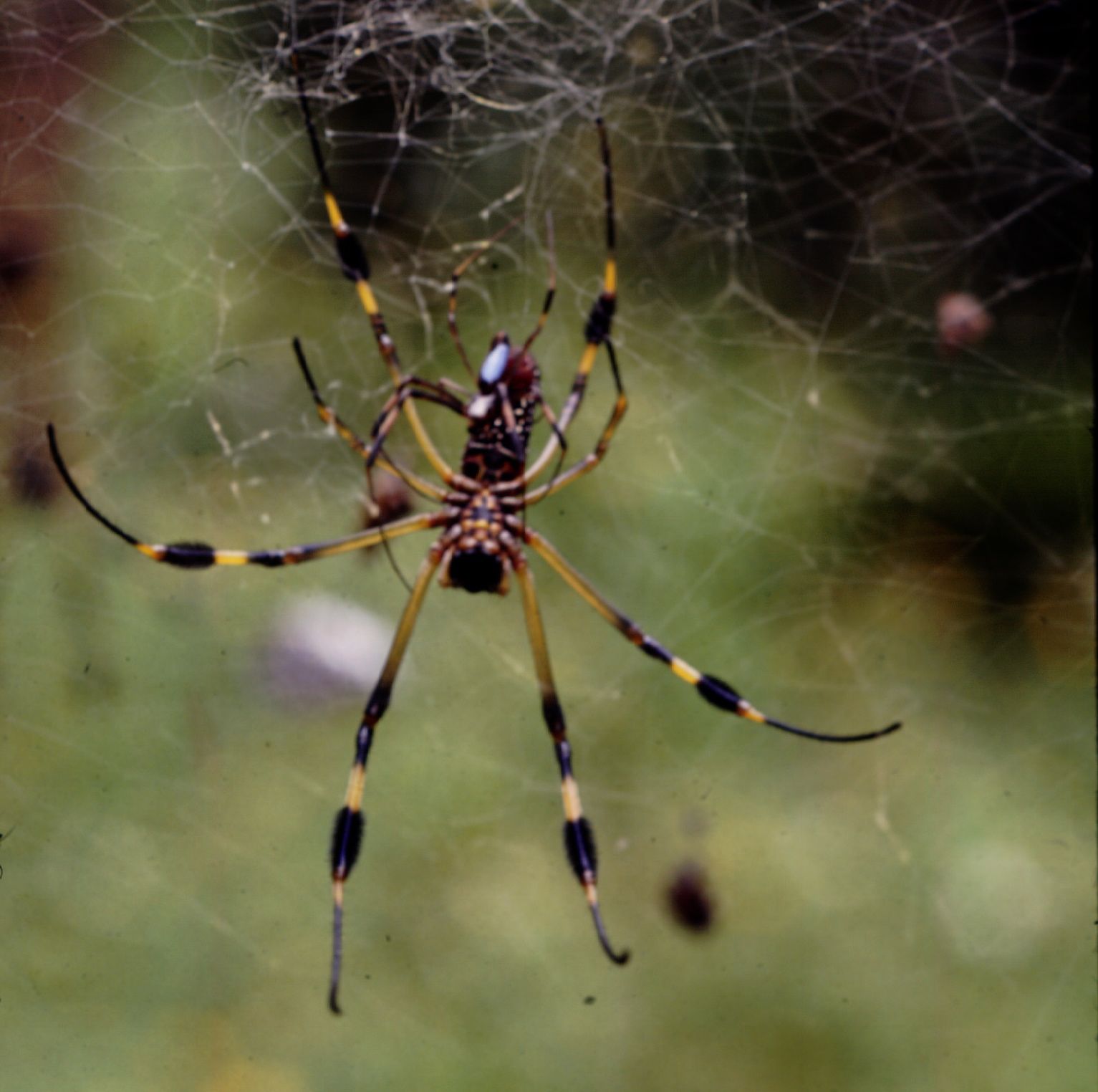
Late Summer:
The
dominant male gets
the first chance to mate when a female matures.
Neither
the
male
nor
the female will molt again, so the size they have at first
maturing is the size they have for their life.
This turned out to be important when I looked at
reproductive success.
 Learn
more about maturation strategies Learn
more about maturation strategies
|
Males
mature
before the females do. Once mature, a male cannot
spin a capture
web
(he actually lacks the silk glands for the sticky
spiral). So he lives
with larger juvenile females, stealing prey or eating
silk from their
web.
If
more
than one
male finds a female, the males fight to establish who is
dominant
(usually the biggest male), and he gets the most to eat.
|







